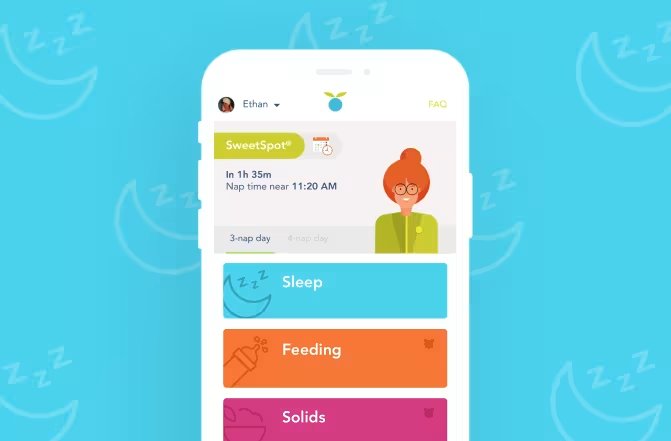Bedtime problems: Sleep resistance in kids
Updated Oct 16, 2025

Our children can be mysterious, little creatures of wonder. Kids need lots of sleep, yet they often behave as if they’re allergic to rest. They stall. They resist. They fight. It’s time to shed some light on something most parents deal with at some point — bedtime battles.
Why kids fight sleep
Try not to take it personally. Despite how it may feel, children don’t resist sleep at bedtime because they want to give you a hard time. Instead, it’s usually due to legitimate “your kid is growing up” type reasons, like:
Outgrowing schedules
Testing limits
Being worried about or nightmares
Seeking independence
Mastering the art of . Requests for “one more” book, drink, hug, etc. are incredibly common and hard to refuse.
These are all appropriate developments as your child get older.
What to do when my child refuses to sleep
If your child is refusing to fall asleep right now and you want to know what to do, we suggest: take a break, reset, and try again.
By taking a break, we mean pausing the effort on getting your kid to fall asleep. If the lights have been off for a significant period (45 - 60 minutes for children 6 months and older) and your little one still isn’t asleep, bring them out of bed. Reset by spending 15 - 20 minutes doing something other than trying to fall asleep (e.g. quietly playing in dim light). Then redo a shortened version of your pre-bedtime routine and try to sleep once again.
This intermission of sorts can help even the most persistent child finally settle down for sleep.
In general, when your child won’t sleep, it’s important to remember something: You can’t make them sleep. You can set them up for success, and provide them with the opportunity, but you can’t wave a magic wand and force them into a state of slumber.
Sadly, there’s just no POOF solution. Instead, prevention is often key when it comes to limiting bedtime battles.
Sleep tips to help with bedtime problems
Now that you have your emergency tool for bedtime resistance (the intermission), let’s talk about prevention. It’s always better to avoid the problem in the first place, isn’t it? Here are tips to help with bedtime:
Reevaluate the timing of bedtime
Keep screens off within the hour before bedtime
Maintain a consistent routine
Build in wind-down time
Use a timer for transitions
Offer limited choices
Find more details below:
Tip #1: Reevaluate the timing of bedtime
Here’s one of those annoying sleep contradictions: Kids can have a harder time falling asleep when they’re under-tired and when they’re overtired.
As your child grows, so will their optimal wake windows. Take a look at our to get an idea of the average wake windows according to your child’s age. (For example, will vary greatly from a little one just entering toddlerhood.)
Tip #2: Keep screens off within the hour before bedtime
Light exposure plays a big role in our circadian day-night rhythms. Make sure to turn screens off within the hour before bedtime, and keep lights dim. Research shows that bright light before bedtime suppresses melatonin, the hormone-like substance that tells the body it’s time to sleep [].
Tip #3: Maintain a consistent routine
Predictable pre-sleep routines can help even young babies understand when it is time to end play and transition to sleep. This typically results in easier bedtimes. Set up a regular, but not rigid, to cue that it’s time to sleep.
Tip #4: Build in wind-down time
Most grown-ups can’t jump straight from adulting to sleep. Neither can kids. Allow for a sufficient amount of downtime (either as part of your bedtime routine or right beforehand) to allow your little one some time to process their day.
If the only opportunity for the quiet time comes at bedtime, that can mean that your little one’s mind races instead of transitioning into sleep mode. This is particularly important for older toddlers and preschoolers.
Tip #5: Use a timer for transitions
Transition periods are notoriously tricky for kids and adults alike, especially at bedtime when we often have to stop doing something fun. Most of us are guilty of saying “one more chapter/episode/scroll on Insta” instead of getting ready for sleep on time.
Visual timers can be a great way to help your kiddo get ready for bed easier. Read .
Tip #6: Offer limited choices
Curb stalling tactics by offering limited choices during your bedtime routine. This gives kids a sense of control over their lives when they typically have such little say (which is understandably frustrating for children).
For kids who take a long time to get into pajamas, it can help to give them a choice between two sets: “Do you want to wear the striped pajamas or the ones with the stars?” Likewise, you can let them choose their bedtime books and whether they want to have three hugs or four hugs before bedtime.
Build common requests into the routine itself (“time for your last bedtime story!”) and turn down further requests by being empathetic, but . For example, you might say, “I know you love reading at bedtime. I do too! It’s time for your books to go to sleep though. We can read more in the morning.”
Takeaway
Reasons children resist sleep can include: outgrowing schedules, testing limits, being worried about night terrors or nightmares, seeking independence, and mastering the art of stalling.
If your child is refusing to fall asleep right now, we suggest taking a break (15 - 20 minutes), then doing a short version of your pre-sleep routine, and trying again.
To prevent sleep battles, try reevaluating the timing of bedtime, keep screens off an hour before sleep, maintain a consistent bedtime routine, build in wind-down time, use a timer for transitions, and offer limited choices before going to bed.
Sleep resistance FAQ
Share article:
Note: The content on this site is for informational purposes only and should not replace medical advice from your doctor, pediatrician, or medical professional. If you have questions or concerns, you should contact a medical professional.
2 Sources
Share article:






